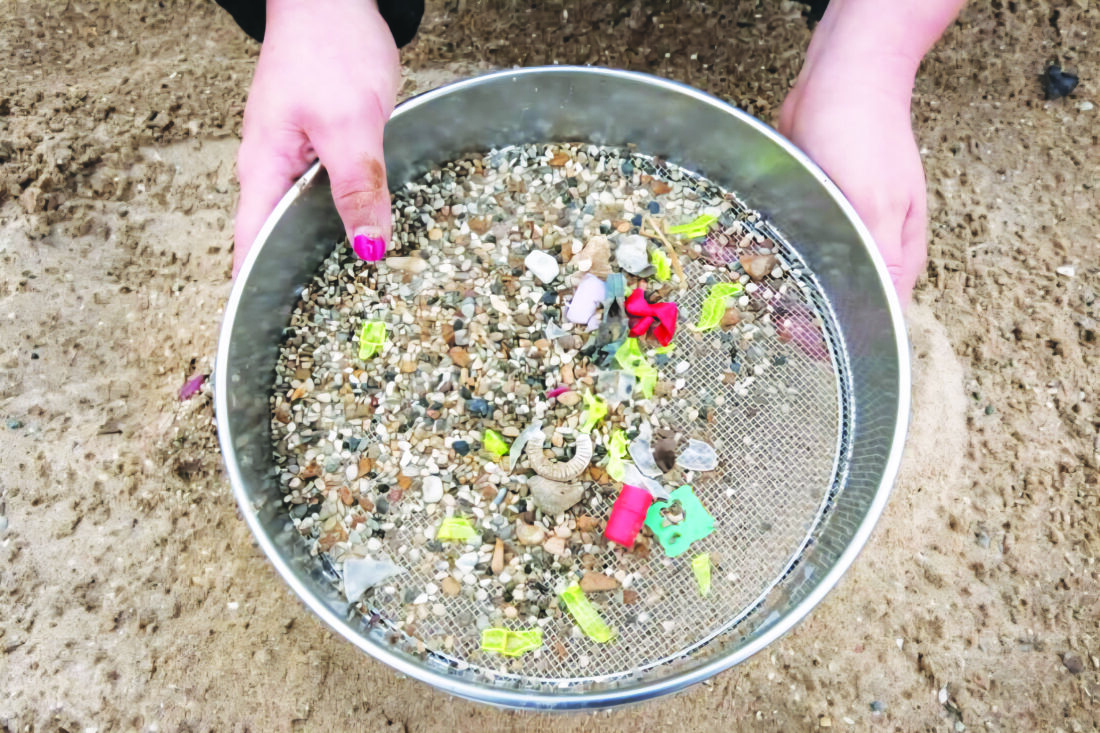Plastic Free July
Alliance for the Great Lakes launches initiative

Plastics found on the shoreline of a Great Lakes beach. Image from Alliance for the Great Lakes Facebook
HOUGHTON — With over 20 million pounds of plastic making its way into the Great Lakes every year, the Alliance for the Great Lakes is encouraging the public to participate in “Plastic Free July”.
“We all love and depend on clean water,” the Alliance writes. “Unfortunately, plastic is polluting our waterways — in the Great Lakes and around the world.”
Microplastics and other plastic material have been found in all five of the Great Lakes, including in the fish that inhabit them. These lakes provide drinking water and food for 40 million people.
According to a University of Toronto study, 90% of water samples from the Great Lakes taken in the past ten years had levels of plastic that are “unsafe for wildlife.” These plastics are ending up not only in the bodies of fish and birds, but our own. On average, humans ingest a credit card-sized amount of plastic every week.
These plastics pose several risks to our health and the environment, and so do their ingredients. Plastic products often contain flame retardants, UV stabilizers, and colorants, and heavy metals such as lead, cadmium, and mercury. When these seep into their surroundings, it causes further pollution and dangers.
The Alliance for the Great Lakes offers several policy solutions to help reduce the amount of plastic in our beloved lakes. The first of these is to eliminate single-use plastics, one of the most common sources of microplastic pollution.
Another recommendation is to advocate for more accountability with industrial manufacturers that are habitually dumping plastic into our waterways. Plastic pellets and other synthetic byproducts are often discarded directly into the lakes, where they remain for decades or even centuries.
“We can start with commonsense solutions that can have a big impact right away,” the Alliance writes in their Plastic Free July guide. “The first step is prevention, which is cost-effective, prevents harm at the source, and does not require costly cleanup after the fact.”
“The end goal is to make manufacturers and brands responsible for reducing single-use plastic and instead move toward reusable solutions, and less toxic, more sustainable alternatives.”
“Plastic pollution in the Great Lakes is a threat to both human health and the environment,” said Olivia Reda, the Volunteer Engagement Manager at the Alliance for the Great Lakes, in a report about the amount of plastic litter in the waters. “The volume of plastic found on our shorelines demonstrates the urgent need to pass federal, state, and local laws that reduce plastic pollution getting into the lakes.”
Reda added that Alliance volunteers are finding, “literally tons of litter each year.” A 2024 report stated that 86% of the litter found on Great Lakes beaches was plastic.
To learn more about the Alliance for the Great Lakes’ Plastic Free July and how you can get involved, visit greatlakes.org.
